An overview of some of the animals you may see in the Channel Islands National Park.
The Channel Islands are home to incredible biodiversity. Often referred to as the Galapagos of North America because of the number of different animals found there, the Channel Islands support over 100 endemic species (or species found nowhere else on the planet).
Whether by land or by sea, these animals are sure to astound you as you watch in awe — and from a respectful distance, of course!
Here are just a few of the amazing creatures you might find at Channel Islands National Park:
Terrestrial Animals
Many of our animals show obvious signs of adapting to island life. One indicator that evolution has acted on an island species is its size. Through a process called island dwarfism, over many generations, species that are larger than a breadbasket in size tend to shrink, including the island fox and island spotted skunk. On the flip side, island gigantism results in species smaller than a breadbasket growing larger, which is the case for the island scrub-jay.
Island Fox
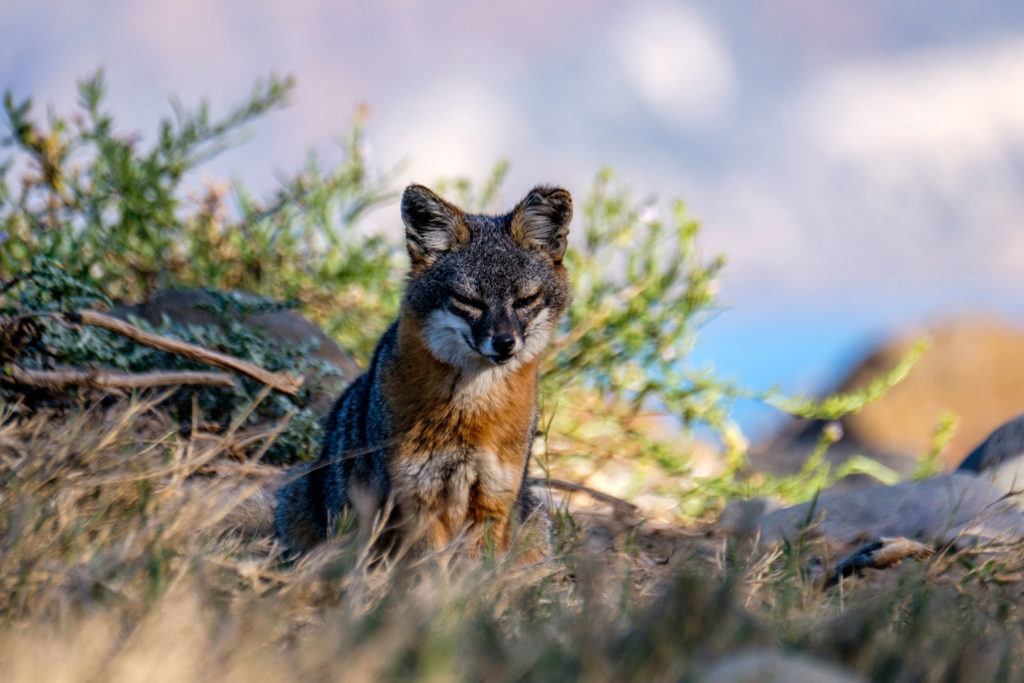
The island fox is a small fox (only about four pounds), native to six of the eight Channel Islands of California. There are six subspecies, each unique to the island it lives on, such as the Santa Cruz Island Fox (above). Island foxes are generally docile, and often bold when accustomed to humans. They’ll even hop on the picnic table in hopes of stealing your lunch!
Island Scrub-Jay
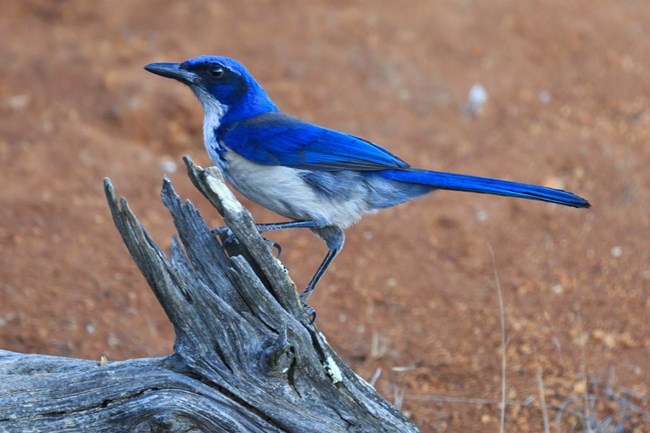
The island scrub-jay, as compared to its mainland cousin, the western scrub-jay, is larger, darker blue in color, and has a distinctive call, making it the most differentiated of all the island endemic birds. This species is the only scrub-jay on the Channel Islands and is found only on Santa Cruz Island. They are remarkable for their intelligence, memory and curiosity.
Island Spotted Skunk
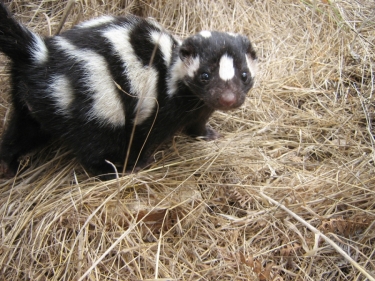
Photo Credit: University of California Santa Barbara.
While most people wouldn’t automatically describe a skunk as ‘cute,’ we sure think the island spotted skunk is adorable! The island spotted skunk is also an endemic species, and can be found on the two largest Channel Islands, Santa Cruz and Santa Rosa. The island spotted skunk is largely nocturnal and very hard to find, but it’s that much more rewarding when you do!
Marine Animals
Many of the marine animal sightings happen during the journey to Channel Islands, specifically while boating across the Santa Barbara Channel (between mainland Santa Barbara and Ventura and the Channel Islands). The Channel is rich in nutrients and food, drawing a third of the total species of marine mammals (whales, sea lions, seals, and more) to the Santa Barbara Channel. The Channel (as the name implies) quickly drops off to become very deep (over 1,000 feet in some places!), supporting a healthy marine ecosystem from the bottom up.
Humpback Whale
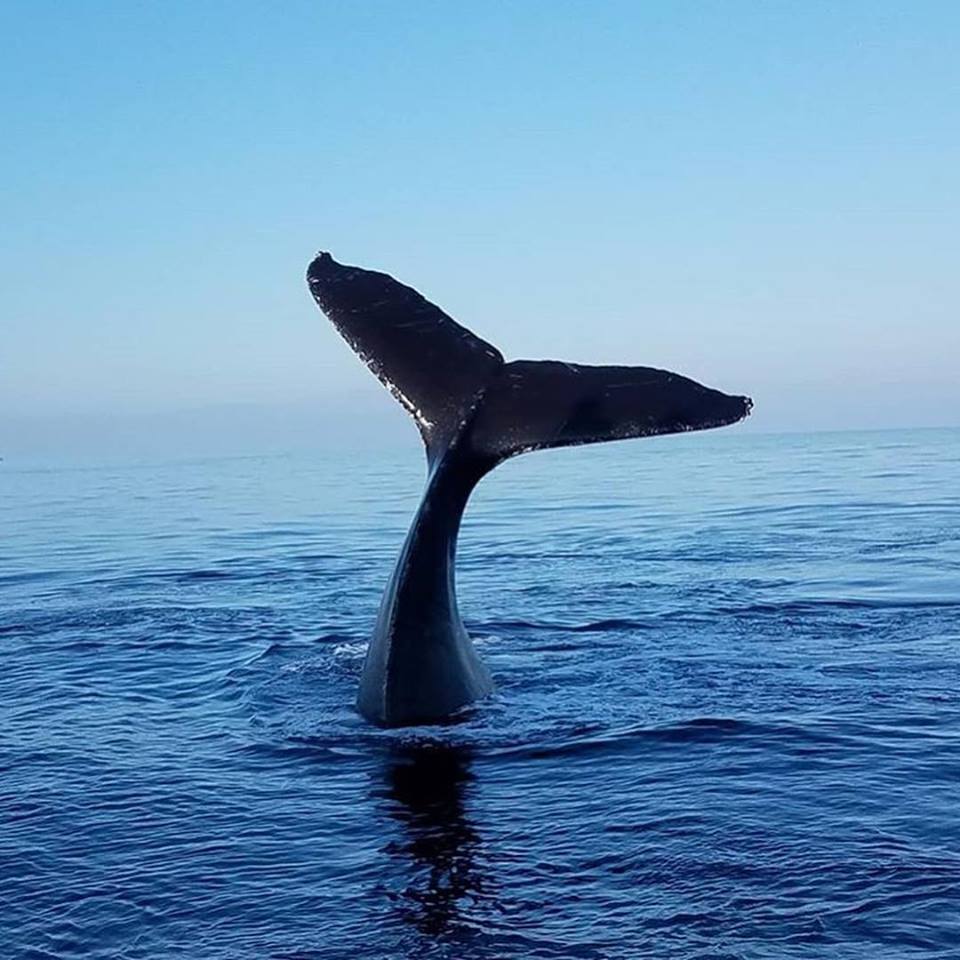
Humpback whales are named for the characteristic dorsal fin that sits on a large “hump” on the back, which is noticeable when the whale arches its back to dive, or sometimes breach in acrobatic leaps. Generally, the Humpback whale can be seen in the Santa Barbara Channel from mid-May to mid-September on whale-watching boats. During the humpback season, it is common to find Humpbacks.
Common Dolphin
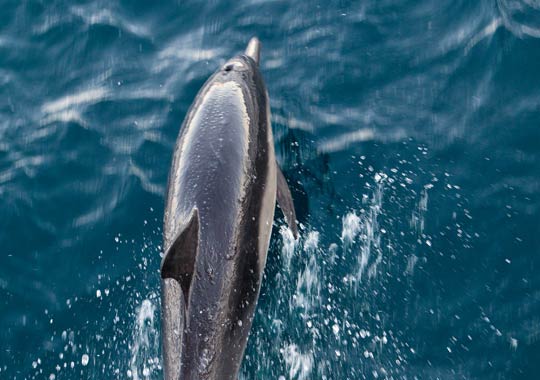
Common dolphins are one of the most numerous cetaceans in the world, with a population that is estimated to be over one million. Nearly every ride across the Santa Barbara Channel includes interaction with common dolphins. Common dolphins are found in all of the world’s temperate seas (basically, wherever the ocean is free of ice). In the Channel, visitors can find both long- and short-beaked common dolphin playing in the boat wake or by the bow.
California Sea Lion
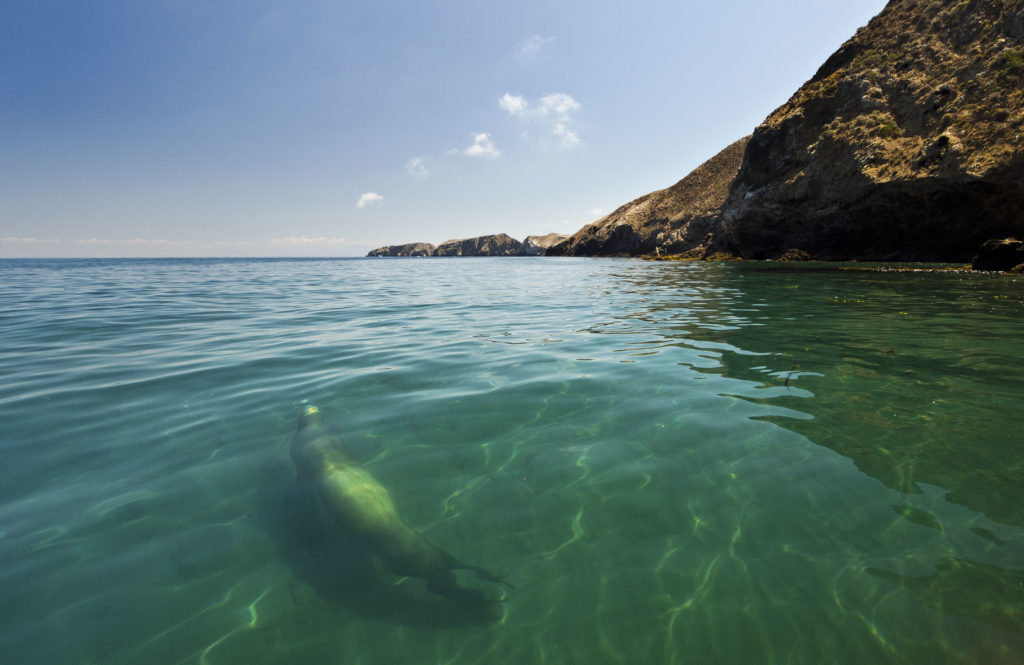
ARF! ARF! ARF!
Did you know that sea lions produce loud roars and barking, which explains why they’re named after lions? The deepest dive ever recorded by a California sea lion was 900 feet and it lasted just under ten minutes. San Miguel Island is home to one of the largest rookeries in the world for California sea lions with a breeding population of approximately 80,000 animals. That’s one crowded beach!


[…] even more to see while on your visit to Channel Islands National Park! Check out the animals you may see on your visit while hiking or on the boat ride […]
[…] Hike is a longer hike, so be sure to bring plenty of water. Many guests are excited to see the Island Fox and Island Scrub Jay as they are endemic to the […]